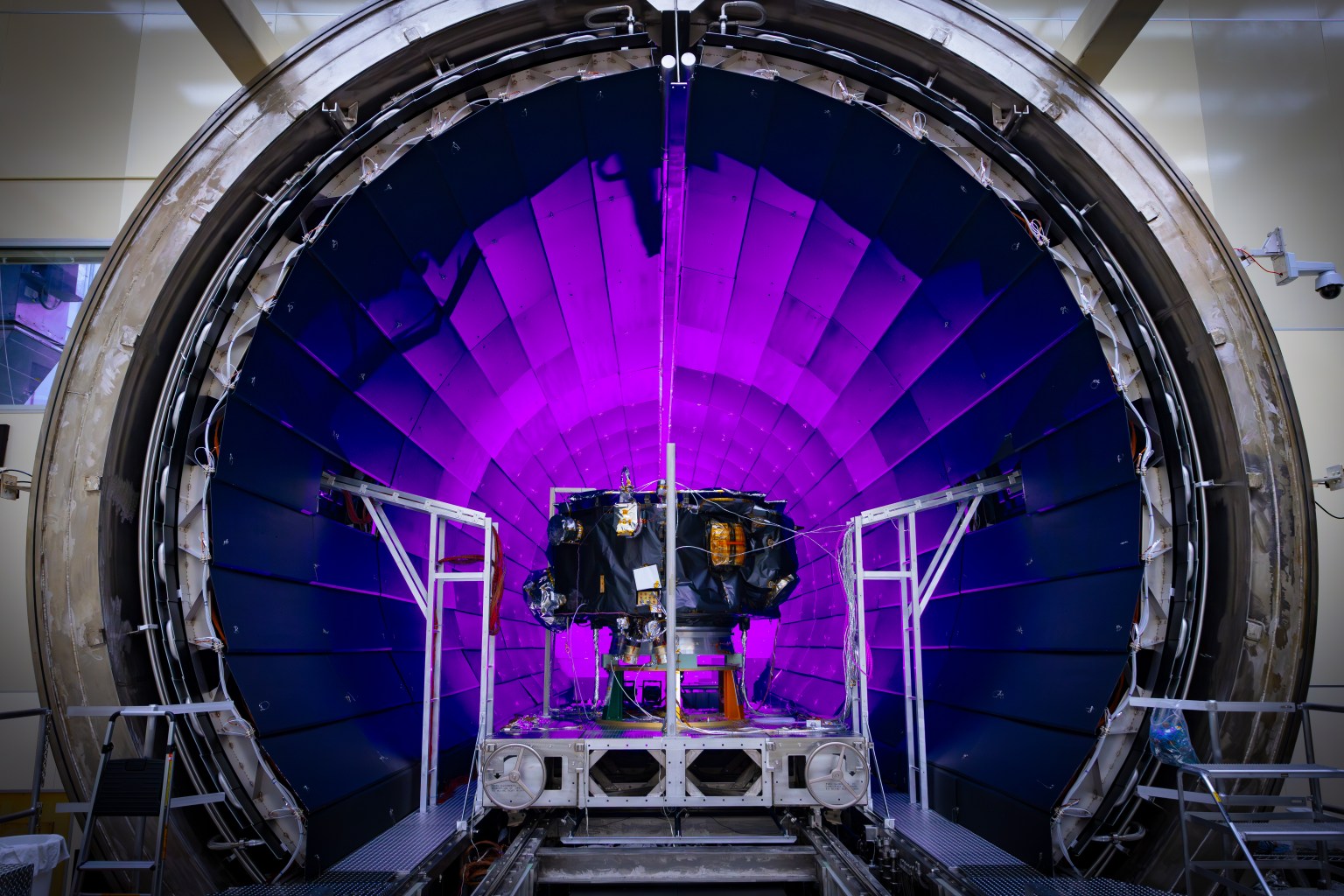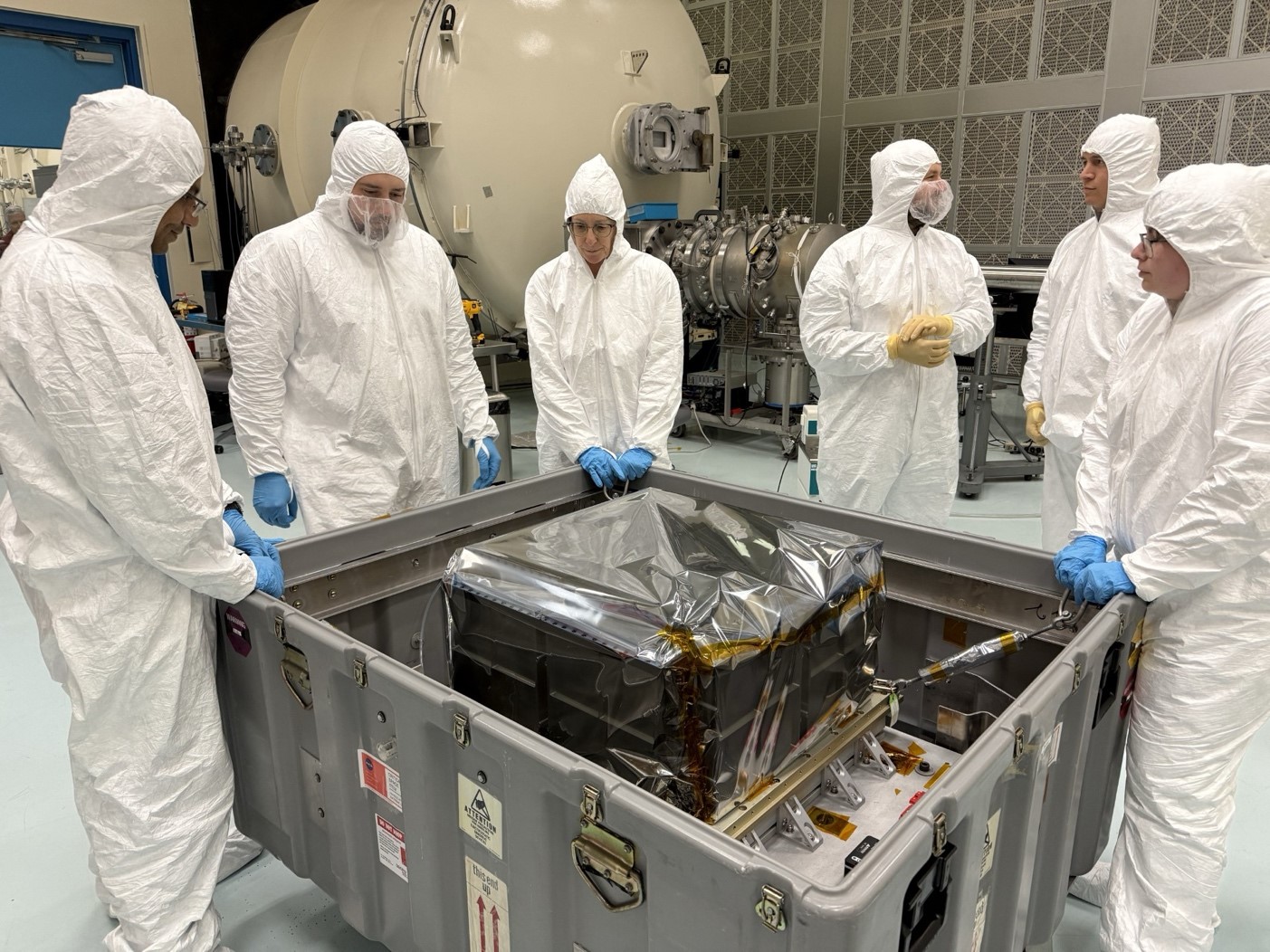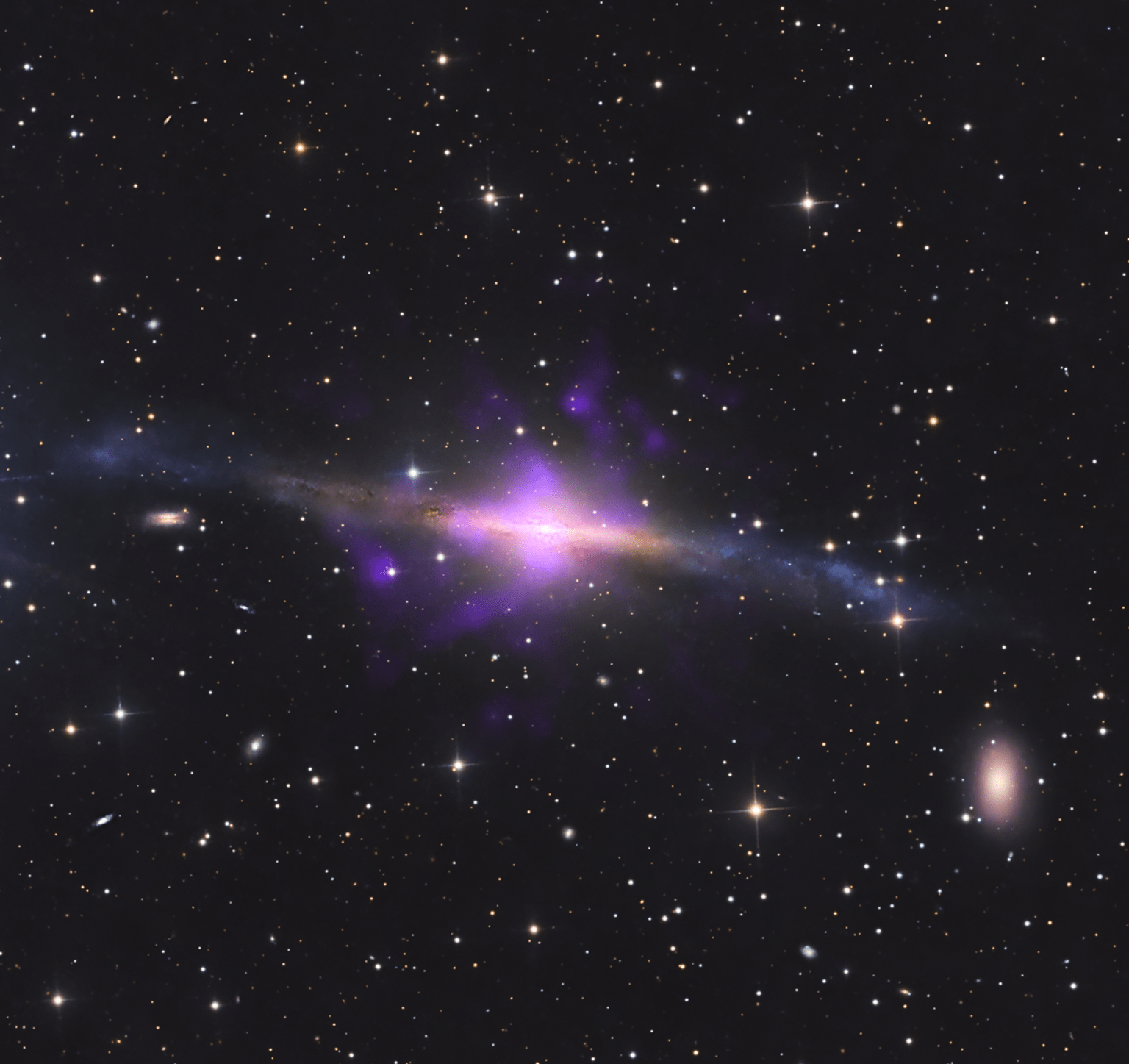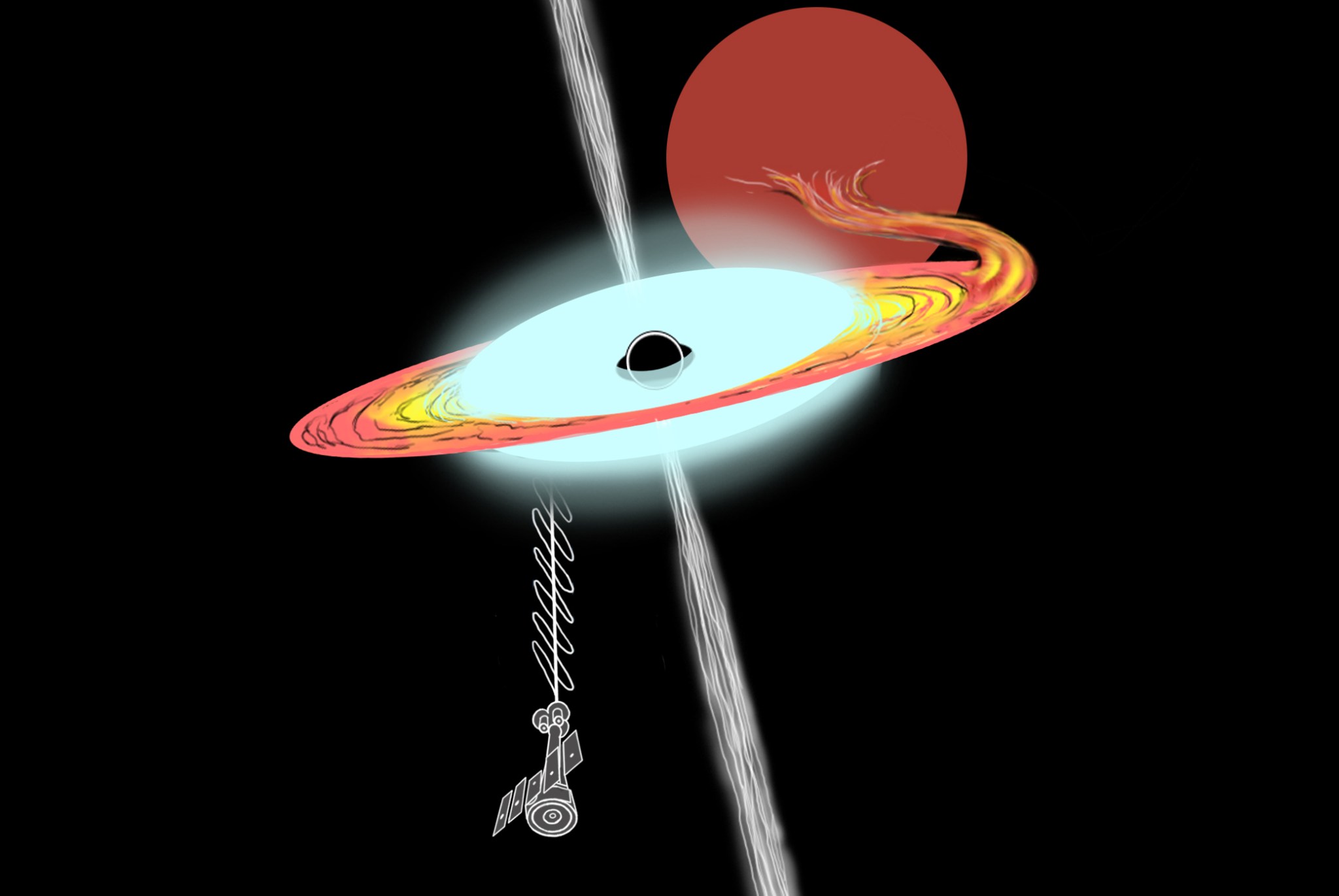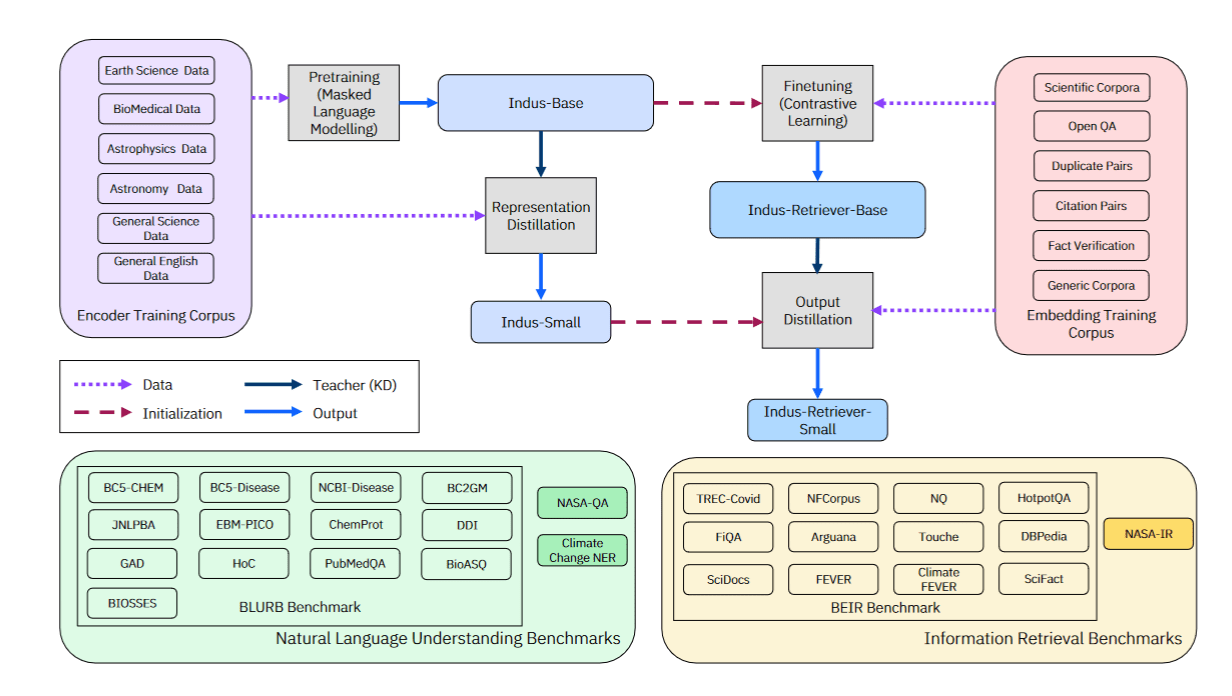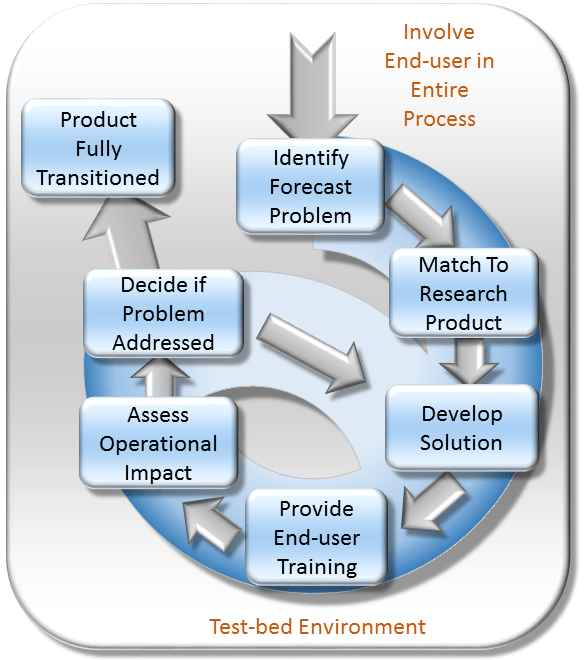3 Min Read NASA’s IMAP Arrives at NASA Marshall For Testing in XRCF On March 18, NASA’s IMAP (Interstellar Mapping and Acceleration Probe) arrived at NASA’s Marshall Space Flight Center in Huntsville, Alabama, for thermal vacuum testing at the X-ray and Cryogenic Facility, which simulates the harsh conditions of space. The IMAP mission is a modern-day celestial cartographer that will map the solar system by studying the heliosphere, a giant bubble created by the Sun’s solar wind that surrounds our solar system and protects it from harmful interstellar radiation. To view…
Read MoreTag: Marshall Science Research & Projects
Understanding Cosmic Explosions: StarBurst Arrives at NASA for Testing
From left to right, NASA Marshall engineers Carlos Diaz and John Luke Bili, U.S. Naval Research Laboratory mechanical engineer contractor Eloise Stump, and Marshall engineers Tomasz Liz, David Banks, and Elise Doan observe StarBurst in the cleanroom environment before it’s unboxed from its shipping container. The cleanroom environment at Marshall is designed to minimize contamination and protect the observatory’s sensitive instruments. Image Credit: NASA /Daniel Kocevski StarBurst, a wide-field gamma ray observatory, arrived at NASA’s Marshall Space Flight Center in Huntsville, Alabama, March 4 for environmental testing and final…
Read MoreNASA Finds ‘Sideways’ Black Hole Using Legacy Data, New Techniques
4 Min Read NASA Finds ‘Sideways’ Black Hole Using Legacy Data, New Techniques Image showing the structure of galaxy NGC 5084, with data from the Chandra X-ray Observatory overlaid on a visible-light image of the galaxy. Chandra’s data, shown in purple, revealed four plumes of hot gas emanating from a supermassive black hole rotating “tipped over” at the galaxy’s core. Credits: X-ray: NASA/CXC, A. S. Borlaff, P. Marcum et al.; Optical full image: M. Pugh, B. Diaz; Image Processing: NASA/USRA/L. Proudfit NASA researchers have discovered a perplexing case of a black hole that appears to…
Read MoreNASA’s IXPE Details Shapes of Structures at Newly Discovered Black Hole
5 min read Preparations for Next Moonwalk Simulations Underway (and Underwater) NASA’s IXPE (Imaging X-ray Polarimetry Explorer) has helped astronomers better understand the shapes of structures essential to a black hole – specifically, the disk of material swirling around it, and the shifting plasma region called the corona. The stellar-mass black hole, part of the binary system Swift J1727.8-1613, was discovered in the summer of 2023 during an unusual brightening event that briefly caused it to outshine nearly all other X-ray sources. It is the first of its kind to…
Read MoreNASA, USAID Launch SERVIR Central American Hub
3 min read Preparations for Next Moonwalk Simulations Underway (and Underwater) U.S. Ambassador to El Salvador, William H. Duncan, speaks to attendees at the SERVIR Central America launch in San Salvador. SERVIR SERVIR, NASA’s flagship partnership with the U.S. Agency for International Development (USAID), launched a new regional center, or hub, in Central America on Dec. 3. The new hub is in partnership with the Tropical Agricultural Research and Higher Education Center in Turrialba, Costa Rica, and is supported by the USAID Central America and Mexico Regional Program. The launch…
Read MoreNASA and IBM Collaborate to Develop INDUS Large Language Models for Advanced Science Research
A collaboration between IMPACT and IBM has produced INDUS, a comprehensive suite of large language models (LLMs) tailored for the domains of Earth science, biological and physical sciences, heliophysics, planetary sciences, and astrophysics and trained using curated scientific corpora drawn from diverse data sources. Kaylin Bugbee (ST11), team lead of NASA’s Science Discovery Engine (SDE), spoke to the benefit INDUS offers to existing applications: “Large language models are rapidly changing the search experience. The Science Discovery Engine, a unified, insightful search interface for all of NASA’s open science data and…
Read MoreSERVIR Co-hosts Regional Workshop on Inclusive Climate Action
From 2/12-16/24, representatives of SERVIR’s Science Coordination Office participated in an Inclusive Climate Action Workshop in Chiang Mai, Thailand. Hosted by SERVIR’s Southeast Asia program, along with USAID, the Asian Disaster Preparedness Center, and the World Wildlife Fund, the event was organized as a space to exchange ideas on how Earth and climate information can be more actionable for and inclusive of Indigenous communities, women, youth, and other underrepresented communities. The event convened nearly 100 participants from across five Southeast Asian countries who provided insight on how SERVIR and its…
Read MoreSPoRT Undertakes New Collaboration with the United Nations (U.N.) Satellite Centre
Patrick Duran and Anita LeRoy (ST11) met with Samir Belabbes from the United Nations Institute for Training and Research to investigate ways for SPoRT to provide NASA remote sensing products to the UN Satellite Centre. The new collaboration springs from a presentation given by Belabbes at last year’s Joint Applications Workshop of NASA’s CYGNSS and TROPICS missions, which was organized by Duran and Jason Dunion from the University of Miami. The UN Satellite Centre maintains a 24/7 operational forecasting and disaster response center that serves UN member states. The Centre…
Read More